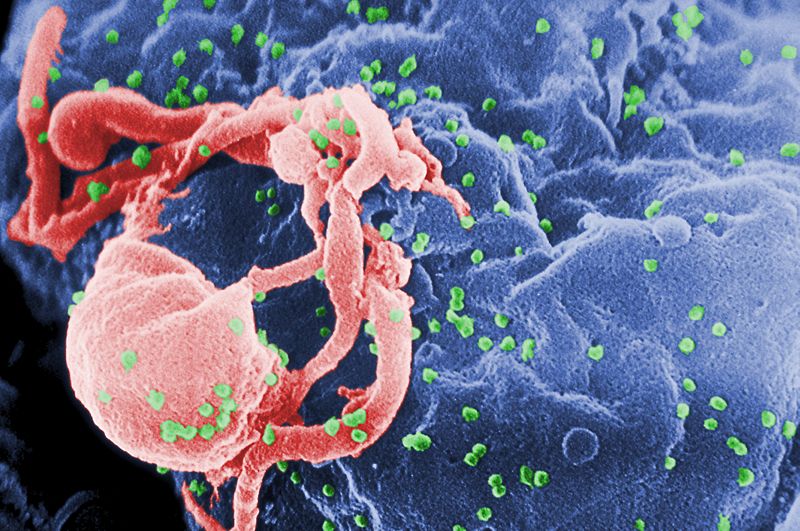 HIV Virus (Green) ***23 September 2013 By Tulip Mazumdar
HIV Virus (Green) ***23 September 2013 By Tulip MazumdarDeath rates fell from 2.3 million during its peak in 2005 to 1.6 million last year, says UNAIDS.The number of HIV infections and Aids-related deaths has fallen dramatically, according to a UN report.
The number of new HIV infections fell by a third since 2001 to 2.3 million.
Among children, the drop was even steeper. In 2001 there were more than half a million new infections. By 2012 the figure had halved to just over a quarter of a million.
The authors put the fall in deaths and infection rates in children down to better access to antiretroviral drugs which help suppress the virus.
Without treatment, people with HIV can go on to develop Aids which makes simple infections deadly.
By the end of 2012 almost 10m people in low and middle income countries, including South Africa, Uganda and India, were accessing antiretroviral therapy, according to the report.
The improved access is being attributed to drugs being more affordable and available in communities, as well as more people coming forward for help.
Way to go
According to UNAIDS, the world is "closing in" on its Millennium Development Goals to stop and reverse the Aids epidemic by 2015.
But it says the world can go beyond its target of getting 15m people on HIV treatment by 2015. The World Health Organization has now revised its guidelines making even more people eligible for treatment.
The report also found that progress has been slow in providing HIV services to people who are most at risk of infection, like those who inject drugs.
And it highlights the need to do more to deal with sexual violence against women and girls. They make up a key group of people vulnerable to infection.
Bev Collins, Health Policy Advisor at Doctors without Borders said: "Huge leaps forward have been made to make sure that millions of people - especially in the developing world - can access lifesaving HIV treatment at an affordable price.
"But this is no time for complacency. We need to keep on rolling out access to better treatment strategies, expanding access to accurate, cost-effective testing, and to care"

No comments:
Post a Comment